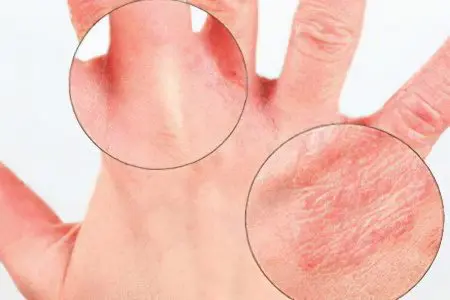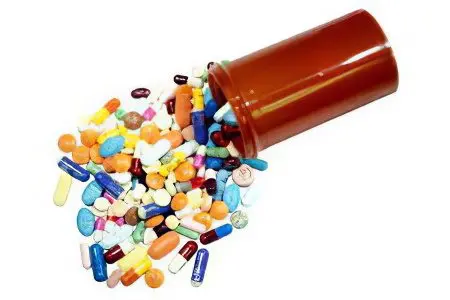Contents
What is psoriatic arthritis?
Psoriatic arthritis – this is an inflammation that has arisen in the joints against the background of a disease that a person has called psoriasis. Psoriasis affects both males and females equally. If in the past doctors considered psoriatic arthritis to be a type of rheumatoid arthritis, now it has been isolated as a separate disease.
There are several types of the disease:
Arthritis psoriatic asymmetric. Several joints are involved in the pathological process, most often up to three. In this case, both large and small bone elements can be affected. A similar paired joint does not suffer.
Symmetrical arthritis affects paired joints, actively progresses and often leads to disability. Its course resembles rheumatoid arthritis.
Arthritis psoriatic, affecting the interphalangeal distal joints. First of all, the small joints of the fingers, located near the nails, suffer. This applies to both the upper and lower extremities. It is often confused in the initial stages with osteoarthritis.
Spondylosis, when the disease is more affected by the spine in one or more of its departments.
The most severe form of the disease is deforming arthritis. The joints are destroyed, and the person becomes disabled due to the inability to perform the simplest actions.
Symptoms of psoriatic arthritis

The most striking symptom of psoriatic arthritis is pain.
It can occur in various joints, but there are certain symptoms that make it possible to suspect this particular disease:
The joint swells, this swelling goes beyond its area and somewhat spreads to nearby tissues.
If the joint is palpated, the person will experience pain.
The place affected by the disease has a bluish color. Sometimes it can be purple.
The affected distal interphalangeal joints, with a combination of all of the above signs, are somewhat reminiscent of the shape and color of a radish.
Often the nail plates are affected, which allows a more accurate diagnosis, as it suggests psoriasis.
The fingers thicken, sometimes it happens symmetrically on both the upper and lower extremities.
Fingers can be shortened in size.
Since the density and elasticity of the ligaments are disturbed, dislocations of different directions can form.
If the intervertebral joints are affected, which occurs in 40% of cases, then ossifications are formed, this causes pain and stiffness of movements.
The skin at the site of the lesion will have a higher temperature than the general body temperature.
Doctors also distinguish a malignant form psoriatic arthritis. Most often, this pathology affects men at a young age (up to 35 years and earlier).
It has its own specific symptoms:
The joints of the spine and skin are always affected.
Feverish state.
Loss of energy and exhaustion.
Violation of joint mobility, polyarthritis with severe pain.
Enlargement of lymph nodes.
The disease affects most organs: eyes, liver, kidneys, heart and nervous systems.
Causes of psoriatic arthritis

There are several reasons for the development of the disease. Among them, the most likely are:
Disorders in the work of the nervous system. That is why psoriasis belongs to the category of psychosomatic diseases. The impetus can be constant nervous tension, which is expressed in mental health disorders. Often the strongest stressful situation (death of a loved one, divorce, etc.) becomes a provoking factor. Arthritis occurs as a secondary disease, against the background of existing problems with the skin.
Trauma can also be a contributing factor. Against the background of existing psoriasis, inflammation can occur even in a slightly injured joint. In the future, the disease will gradually cover more and more new areas.
Taking certain medications can trigger the development of the disease. These include popular anti-inflammatory non-steroidal drugs (ibuprofen, naproxen, diclofenac), as well as drugs to lower blood pressure (egilol, vasocardin, and others).
An unhealthy lifestyle and bad habits are a secondary factor in the onset of the disease.
Symptoms of psoriatic arthritis can worsen significantly during menopause in women. The cause is a hormonal imbalance in the body. Pregnancy, on the contrary, significantly reduces the signs of the disease.
Transferred infectious diseases and their weakened immunity. These include streptococcal tonsillitis, chickenpox and other diseases.
The hereditary factor plays an important role in the development of pathology. It is worth paying more attention to your joints for those people whose close relatives suffered from psoriatic arthritis. This criterion has been carefully studied in many studies, and it was found that if both parents suffered from psoriasis, then the child is more likely to also be affected by this type of arthritis.
Increased activity of T-lymphocytes, which are involved in the body’s immune response to pathological changes and disorders.
Violations in the work of the endocrine gland, as well as the pathological activity of cells responsible for the production of melanin.
Even an old scar on the soft tissues and on the skin, as well as surgical intervention, can be the impetus for the onset of inflammation in the joints.
Many scientists argue that even if a person does not have symptoms that indicate psoriatic arthritis, this does not mean that his joints are healthy.
Treatment of psoriatic arthritis

Compared to rheumatoid arthritis, psoriatic arthritis is more treatable. This is due to the fact that the disease is not always, but in most cases it affects one and not very large joint. It should be understood that it will not be possible to get rid of the disease forever, but it is quite possible to transfer it to the category of chronic and sluggish. This pathology is always treated together with skin therapy, which allows you to achieve the maximum effect.
The basic principles of treatment are as follows:
When the disease begins to worsen in the cold season, then it is advisable to use ultraviolet irradiation of both the skin and the affected joints. Strengthening the processes of regeneration has a positive effect on the course of the disease, and it subsides.
Doctors prescribe local treatment. For this, various ointments are used (fluorocort, sinalar). Most often, salicylic ointment is used, but hormone-based products are often resorted to. This allows you to remove inflammation in the shortest possible time, as well as avoid many side effects from taking similar drugs inside.
If the clinic of the disease is bright, then it will be useful to take sedatives. Against the background of their reception, the severity of symptoms is significantly reduced. Depending on individual tolerance, the doctor prescribes either herbal remedies (valerian) or more serious drugs (seduxen).
When psoriatic arthritis affects a large joint, and the patient’s quality of life is greatly reduced, then doctors use a potent remedy. An emulsion containing hydrocortisone is injected into the joint space. The effect of such treatment is high, since the drug has a direct effect on inflamed tissues. It reduces the permeability of capillaries, prevents scarring, relieves inflammation and swelling. However, there are many side effects that the emulsion can cause, the most serious of which are diabetes mellitus, obesity, hallucinations, depression, paranoia, psychosis, arrhythmia, hypertension, vomiting, loss of consciousness, allergic dermatitis and withdrawal syndrome. Therefore, before introducing the drug, it is necessary to consider the benefits of the possible effect and the harm of possible diseases.
Vitamin and mineral complexes are required to be taken. Their main goal is to increase immunity and normalize metabolic processes in the body. The most important role is played by all B vitamins, as well as vitamin A.
When the patient suffers from severe pain, then he is shown taking NSAIDs.
One of the most powerful drugs for removing torpid inflammation from synovial bags is cyclophosphamide. It is used only in extreme cases, and is more commonly used to treat rheumatoid arthritis. The drug is very strong and is used even for the treatment of oncology, as it has antitumor and immunosuppressive properties. Among the side effects are: toxic hepatitis, hemorrhagic cystitis, thrombocytopenia, leukopenia, alopecia and others.
If none of the above methods gave a positive result, then the doctor may prescribe hormonal drugs. However, this is an extremely undesirable measure, since there is a risk that the disease may become malignant and further therapy with other drugs will be useless. taking hormonal drugs should be under strict control with strict adherence to the indicated dosage and frequency.
Another extreme measure is immunosuppressants. They are prescribed after hormonal drugs, even if they did not bring the desired relief.
Methotrexate belongs to the group of serious and complex drugs with a large list of contraindications. Used to treat even malignant cancerous tumors, has immunosuppressive properties. Among the contraindications are the following, the most significant: leukopenia, gastric ulcer, perforation of the gastrointestinal tract, sometimes fatal, cirrhosis and necrosis of the liver, severe allergic reactions, visual impairment, impotence, bacterial infections and others. Rarely, however, it is used to treat psoriatic arthritis.
There is another group of drugs. These are biological agents of the latest generation and they are quite expensive. These include etanercept, infliximab, and adalimumab. The drugs are able to control the activity of not only the skin in psoriasis, but also relieve inflammation from the joints. Their main disadvantage is the high price.
Surgical treatment is a last resort. It is required when conservative methods of treatment were powerless. A person suffers from inflammation in the joints, which cannot be removed by any drug. Also during the operation, the surgeon can correct the deformity of the joint and remove the ankylosis that has appeared.
Diet for psoriatic arthritis

In addition to taking medications, do not forget about a properly composed diet. If you adhere to the menu recommended by the doctor, you can significantly reduce the manifestations of the disease.
During an exacerbation, special attention should be paid to:
Lactic products.
Fruits, berries, vegetables, herbs.
Dietary meat – chicken, turkey, rabbit meat.
Chicken and quail eggs.
Refusal of fatty meat, rich broths, heavy mushroom dishes, canned and overly salty foods will be the key to getting rid of the symptoms of the disease as soon as possible. Be sure to remove sorrel, legumes, spices and sauces from the diet. And, of course, get rid of bad habits – smoking and drinking alcohol.
If “psoriatic arthritis” was diagnosed, then self-medication should be forgotten. No matter how tempting the methods of alternative treatment may seem, they are not able to replace qualified medical care. Moreover, very serious drugs are used to eliminate the disease. Their illiterate reception will only aggravate the course of the disease, and it will be very difficult to cope with it in the future.










taltz ixekizumab 80m საუკეთესო ათრიტი ფსორიაზის მედიკამენტი, ჩემი გამოცდილებით